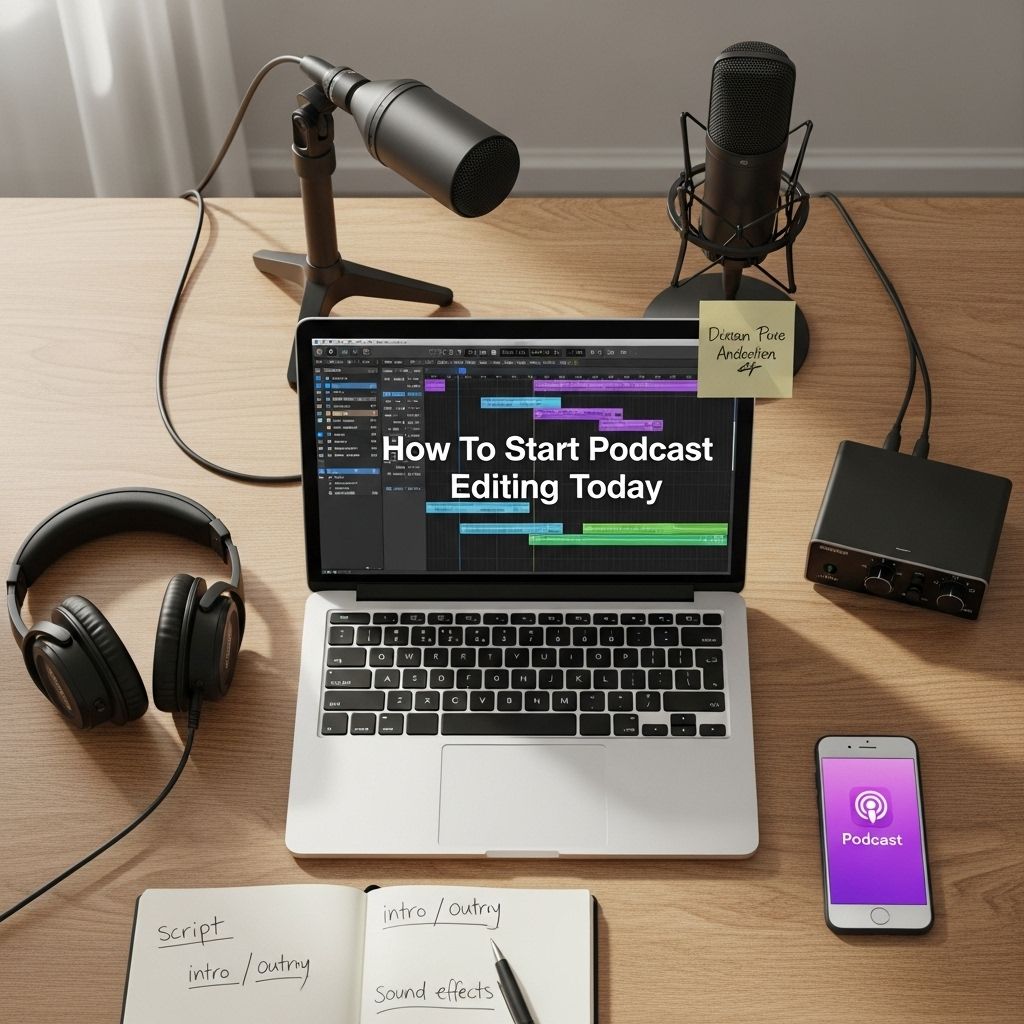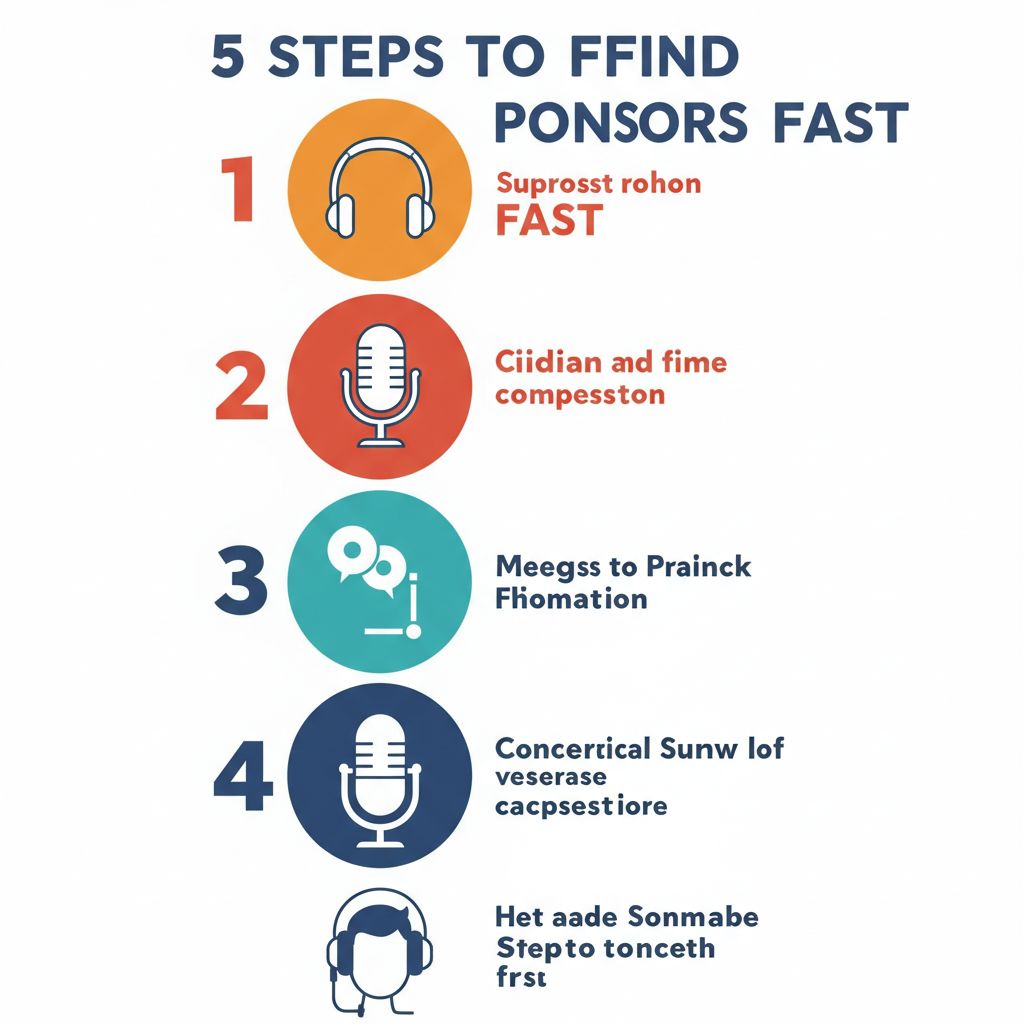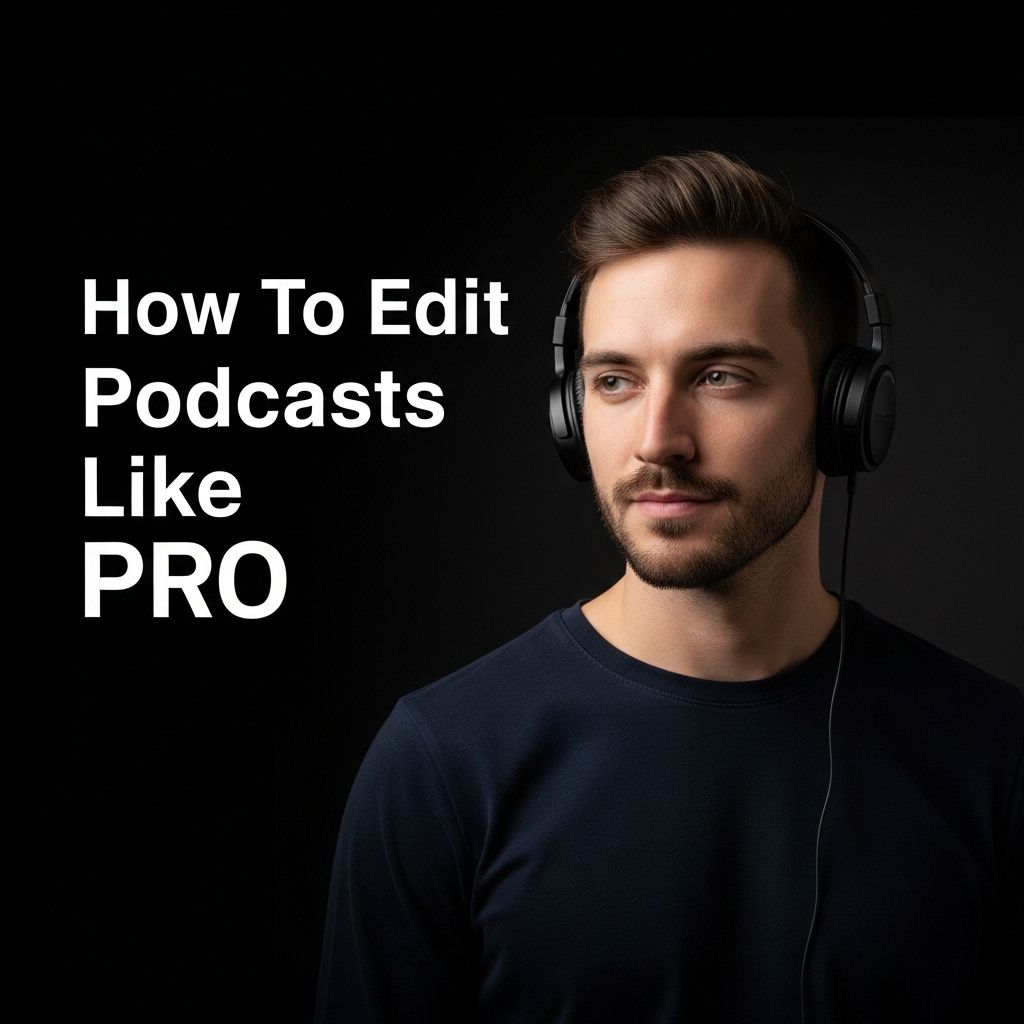Ultimate Guide to Podcast Editing in 2025
Discover essential tips and tools for starting podcast editing in 2025. Elevate your podcast production with expert insights and techniques.

The podcasting landscape is evolving rapidly, with more creators entering the arena and technologies advancing at an unprecedented pace. In 2025, starting podcast editing requires a blend of creative vision, technical skills, and an understanding of the latest tools available. Whether you’re a seasoned podcaster looking to refine your editing process or a newcomer eager to dive into the world of audio production, this guide will walk you through the essential steps and tools needed to create professional-sounding podcasts.
Table of Contents
Understanding the Basics of Podcast Editing
Before diving into the technical aspects, it’s crucial to grasp what podcast editing entails. Podcast editing involves several key components:
- **Audio Cleaning**: Removing unwanted noises, silences, and distractions.
- **Sound Quality Enhancement**: Adjusting levels, applying equalization, and compression to ensure clarity.
- **Content Structuring**: Arranging segments, adding intro/outro music, and incorporating sound effects to enhance storytelling.
- **Final Mixing**: Balancing all audio elements to produce a cohesive final product.
Essential Tools for Podcast Editing
With the increasing demand for high-quality audio content, a plethora of tools are available for podcasters. Here’s a breakdown of some of the best software and hardware options in 2025:
Audio Editing Software
Modern podcast editing software has become more user-friendly and powerful. Here are some top choices:
| Software | Platform | Key Features |
|---|---|---|
| Adobe Audition | Windows, macOS | Multi-track editing, noise reduction, audio restoration |
| Audacity | Windows, macOS, Linux | Open-source, extensive plugin support, easy-to-use interface |
| Reaper | Windows, macOS | Highly customizable, affordable licensing, powerful audio routing |
| GarageBand | macOS | User-friendly, built-in loops and effects, good for beginners |
| Descript | Windows, macOS | Text-based editing, transcription, podcast collaboration features |
Hardware Requirements
A good microphone and audio interface are crucial for capturing clear sound. Consider the following:
- **Microphone**: Look for dynamic or condenser mics from brands like Shure, Audio-Technica, or Rode.
- **Audio Interface**: Devices like Focusrite Scarlett or PreSonus AudioBox are great for converting analog signals to digital.
- **Headphones**: Invest in closed-back headphones to accurately monitor audio without bleed.
Step-by-Step Guide to Editing Your Podcast
Now that you have your tools ready, let’s break down the podcast editing process into manageable steps:
1. Import Your Audio Files
Start by importing all relevant audio files into your chosen editing software. This may include interviews, music tracks, and sound effects.
2. Organize Your Tracks
Label your tracks clearly and arrange them in the order they will appear in your final podcast. Consider color-coding different elements for easier navigation.
3. Clean Up Audio
Remove any background noise, awkward pauses, or mistakes. Most editing software offers tools for noise reduction and silence removal.
4. Enhance Sound Quality
Use EQ to enhance vocal clarity, and apply compression to even out volume levels. This can significantly improve the overall sound.
5. Add Music and Effects
Incorporate intro and outro music, as well as sound effects, to add personality to your podcast. Be mindful of copyright issues—opt for royalty-free music or create your own.
6. Final Mixing
Balance the levels of your tracks to achieve a consistent volume. This is crucial for maintaining listener engagement.
7. Export Your Final Product
Once you’re satisfied with your edits, export your podcast in a suitable format, usually MP3 for distribution.
Best Practices for Podcast Editing
To ensure your podcast stands out, consider these best practices:
- **Maintain Consistency**: Use the same editing style across episodes to create brand recognition.
- **Seek Feedback**: Share drafts with trusted friends or fellow podcasters for constructive criticism.
- **Stay Updated**: Keep an eye on industry trends and new tools to continuously improve your editing skills.
- **Practice Patience**: Editing is an art that improves with time. Don’t rush the process.
Future Trends in Podcast Editing
As we delve deeper into 2025 and beyond, several trends are likely to shape the future of podcast editing:
- **AI Integration**: Expect advances in AI tools that assist with editing, transcription, and even content generation.
- **Remote Collaboration**: Enhanced software will facilitate real-time editing sessions with team members across the globe.
- **Personalized Listening Experiences**: Tailoring content based on listener preferences will become more prevalent, requiring dynamic editing approaches.
- **Increased Accessibility**: Innovations in audio descriptions and transcripts will make podcasts more accessible to diverse audiences.
Conclusion
Starting podcast editing in 2025 offers exciting opportunities for creativity and innovation. By understanding the basics, utilizing the right tools, and following structured steps, you can produce high-quality podcasts that engage listeners and stand out in a crowded market. Embrace the changes and trends in this dynamic field, and never stop learning to enhance your podcasting skills.
FAQ
What equipment do I need to start podcast editing in 2025?
To start podcast editing in 2025, you’ll need a good quality microphone, headphones, audio interface, and a computer with editing software.
What software is best for podcast editing in 2025?
Popular podcast editing software in 2025 includes Audacity, Adobe Audition, and GarageBand, each offering unique features for editing audio.
How do I improve my podcast editing skills in 2025?
Improving your podcast editing skills in 2025 can be achieved through online courses, tutorials, and practice with various audio editing techniques.
What are the common mistakes to avoid in podcast editing?
Common mistakes in podcast editing include leaving long pauses, poor sound quality, and failing to balance audio levels between speakers.
How long does it take to edit a podcast episode?
The time it takes to edit a podcast episode varies, but on average, it can take anywhere from 2 to 6 hours depending on the complexity of the content.
Can I edit podcasts on my phone in 2025?
Yes, in 2025, there are several mobile apps available for podcast editing, such as Anchor and Hindenburg, allowing you to edit directly from your smartphone.








